What Is MVP? From Idea to Real-World Validation
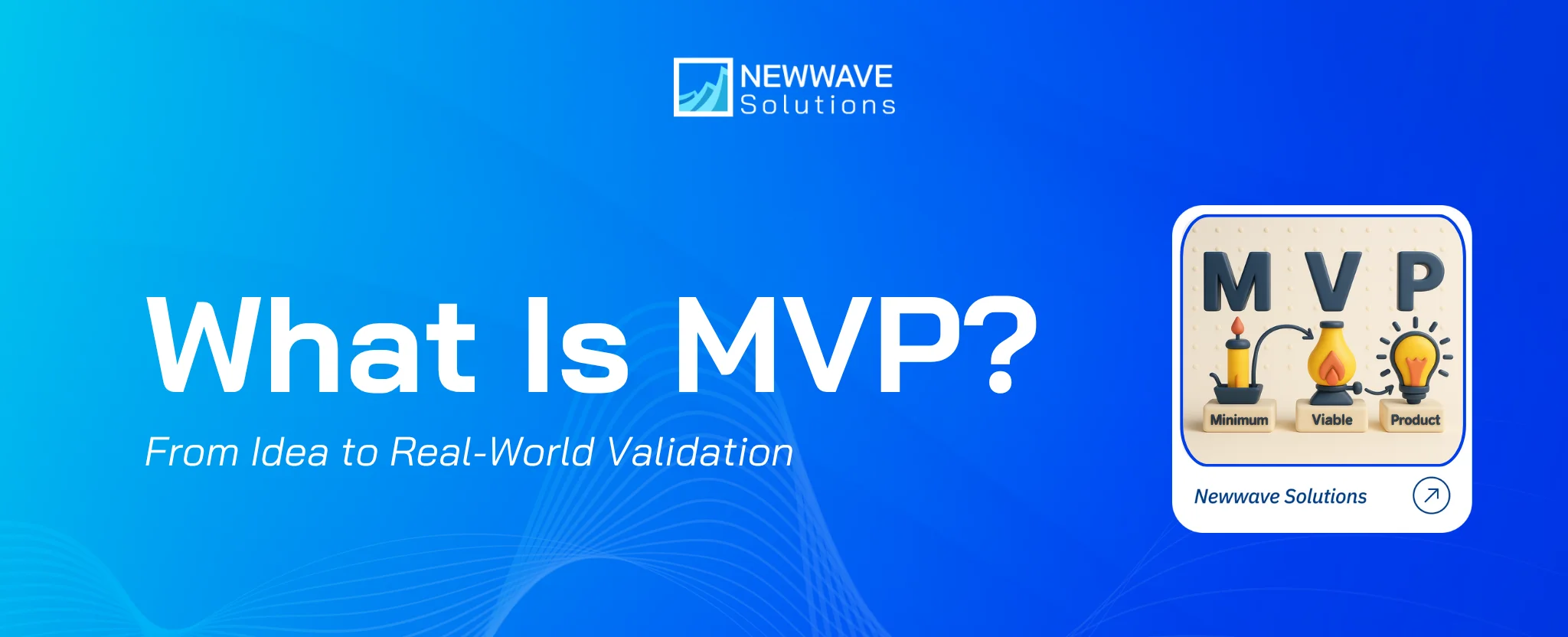
Many software projects fail not because the idea is weak, but because you invest heavily in untested assumptions. What is MVP (Minimum Viable Product) in software development? It’s a smarter way to launch a lean yet functional product, gather real user feedback, and adapt before scaling. In this blog, Newwave Solutions shows how this approach reduces risks, accelerates time-to-market, and builds a sustainable path to success.
What is MVP?
The concept of the Minimum Viable Product (MVP) originated from the Lean Startup methodology, pioneered by Eric Ries in 2008, although its roots can be traced back to Frank Robinson’s research in 2001.
So, what exactly is an MVP (Minimum Viable Product)?
It is the simplest version of a product that still delivers its core value to early users, while minimizing development time and cost. The goal of an MVP is not to build a perfect solution from the start, but rather to test whether the product truly solves a real problem.
Looking to build an MVP that actually validates your business hypothesis? Newwave Solutions helps transform your ideas into testable products through strategic MVP development services.
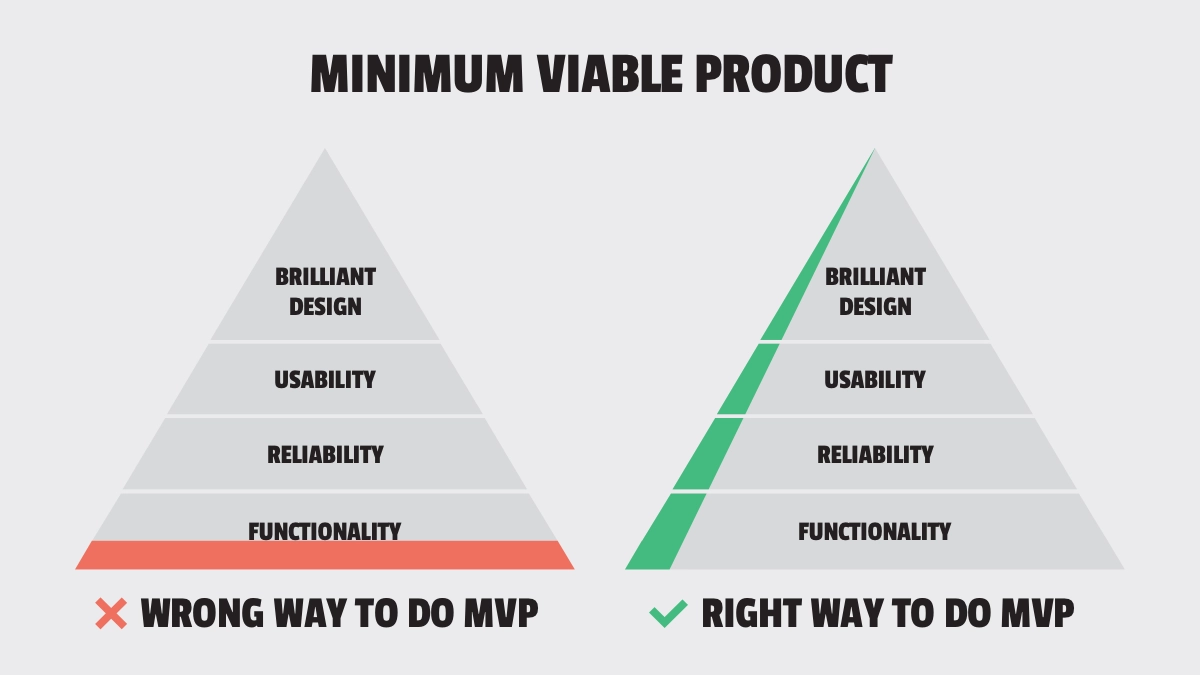
Which Are the Types of MVP?
Choosing the right MVP approach depends on what you need to validate, how much risk you’re managing, and where you are in your product journey. Each type serves distinct purposes and requires different resource commitments.
|
MVP Type |
What It Tests | How It Works |
Best Used When |
|
Conceptual MVP |
Market demand and interest before building | Landing pages, explainer videos, ad campaigns, or pre-order pages that gauge interest without functional product | Development costs are high, market demand is uncertain, or you need rapid validation signals |
|
Interactive MVP (Concierge/Wizard of Oz) |
Solution viability and user workflows | Users interact with what appears to be a complete product, but processes run manually behind the scenes | You need to understand user needs deeply, solution complexity is high, or automation costs are substantial |
|
Functional Product MVP |
Product-market fit, user experience, and technical feasibility | Working software with core features only real product that users can actually adopt and use regularly | Core hypothesis validated, ready to test actual usage patterns, or technical feasibility needs proving |
The strategic sequence many successful products follow: Start with conceptual MVP to validate demand (cheapest, fastest), move to interactive MVP to understand workflows and refine solution (medium investment), then build functional product MVP once you’ve validated both demand and approach (highest investment, highest learning). This staged approach minimizes wasted resources while maximizing learning at each phase.
Examples of Successful MVPs
Real-world examples show how the MVP approach can turn small ideas into global businesses. Here are a few cases that highlight different ways companies used MVPs to test their assumptions and grow:
Amazon: From Single-Category Bookstore to Everything Store
When Jeff Bezos launched Amazon in 1994, he didn’t build a marketplace for everything—he built an online bookstore with minimal features. The MVP included basic product listings, a shopping cart, and simple order fulfillment. No recommendations engine, no Prime shipping, no marketplace for third-party sellers.
Bezos chose books as the perfect MVP category for testing e-commerce hypotheses:
- Standardized products (easy to catalog and describe)
- Didn’t require trying before buying (low return risk)
- Enormous selection that physical stores couldn’t match (clear value proposition)
- Appealed to educated early internet adopters (right audience for testing)
The fundamental hypothesis wasn’t “can we sell books online”—it was “will consumers trust online transactions and wait for shipping instead of buying locally?” This minimum viable product software development approach tested consumer behavior, payment systems, logistics, and customer service at a manageable scale.
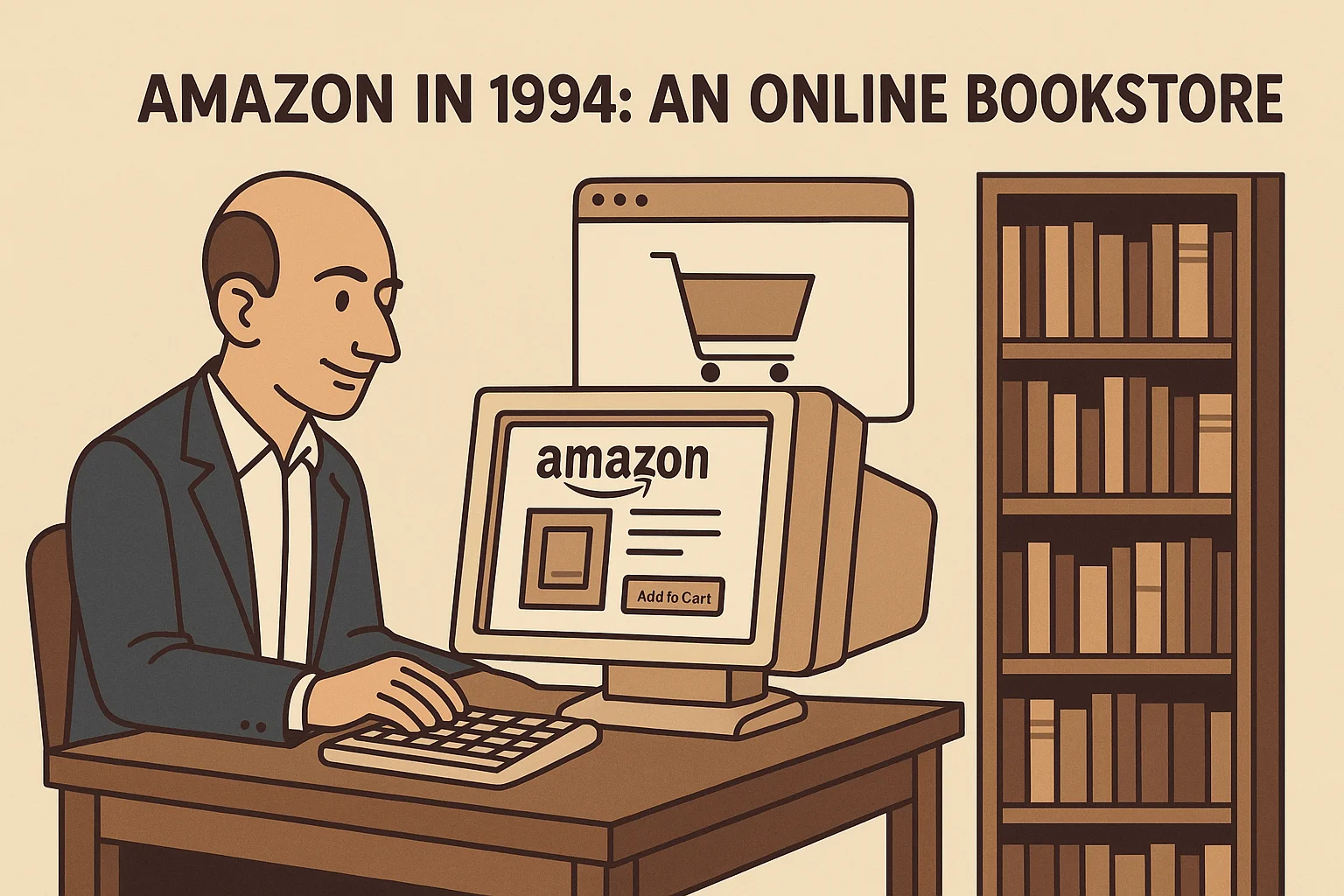
Dropbox: A Video That Proved Demand Before Building
Drew Houston faced a problem in 2007: building cloud storage with seamless synchronization was technically complex and expensive. But the bigger risk wasn’t whether they could build it—it was whether anyone wanted it.
Instead of spending months building a functional product, Houston created a three-minute screencast video demonstrating how Dropbox would work. He posted it on Hacker News and tech forums.
The results that validated demand:
- Waitlist grew from 5,000 to 75,000 signups overnight
- Comments revealed specific pain points with existing solutions
- Users described exactly what features mattered most to them
- Qualitative feedback proved as valuable as signup numbers
Houston validated the hardest assumption first. Technical feasibility was solvable—Dropbox had talented engineers. Market demand was the unknown, and a video tested that for essentially zero cost. This is what is an MVP at its most elegant: testing your riskiest assumption with minimal investment.
Instagram: Listening When Users Tell You What Matters
Kevin Systrom and Mike Krieger built Burbn, a location-based check-in app with photo sharing, commenting, plans, and various social features. It was functional—but it wasn’t taking off.
The turning point from usage analysis:
- Users largely ignored check-ins, plans, and most features
- Photo sharing showed different behavior: high engagement, frequent use, emotional responses
- People used Burbn despite its complexity, just to share photos
- Data contradicted the founders’ original assumptions
Instead of adding features to Burbn, they stripped everything away except photo sharing, comments, and likes. They added filters after noticing users preferred stylized photos, then relaunched as Instagram. The result was impressive: 25,000 users on day one and 1 million users within two months.
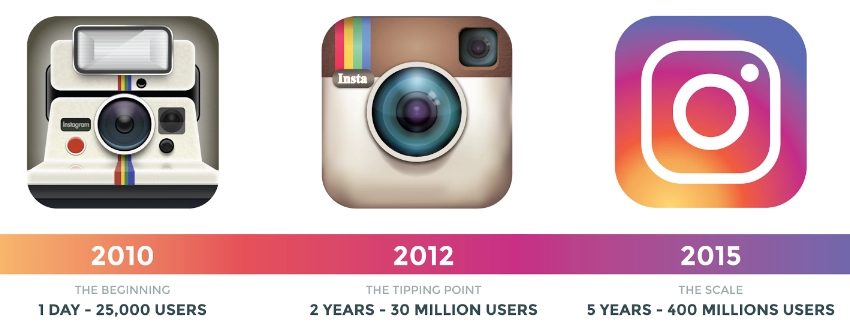
Slack: Internal Tool That Revealed Enterprise Need
Stewart Butterfield’s team at Tiny Speck built an internal chat tool while developing their game, Glitch. When the game failed, they realized something unexpected: team members dreaded losing the chat tool more than the game itself.
The validation path:
- Internal use demonstrated dramatic productivity improvements
- Tested with friendly companies before public launch
- Beta teams reported exceptional retention—once adopted, they stayed
- Early feedback shaped key features: integrations, security, search, admin controls
Slack reached $1 billion valuation within two years and 15,000 teams within 12 months of launch, proving that solving your own problem intensively can reveal broader market needs.
What Core Benefits Does an MVP Unlock?
Adopting an MVP mindset is more than a development tactic; it’s a strategic shift that de-risks innovation. It moves you from a “build it and they will come” hope to a “test, learn, and adapt” certainty. The benefits are profound, impacting everything from your budget to your final market fit.
Launch and Learn Faster
Speed isn’t just about being first—it’s about learning while competitors are still planning. Traditional product development follows a waterfall: six months of planning, twelve months of building, then launch and pray. MVP flips this entirely—you can have something in users’ hands within 6-12 weeks.
The compound advantage:
- Early market presence establishes brand recognition while the category is still forming
- Faster feedback loops mean you iterate toward product-market fit while competitors iterate toward assumptions
- Investor confidence grows with demonstrated traction, not PowerPoint projections
Reduce Financial Risk
What is an MVP if not a risk management strategy disguised as product development? Instead of betting your entire budget on a complete vision, you’re making smaller, validated bets.
How staged investment protects you:
- Traditional approach: Spend $500K building complete vision, then discover users wanted something different
- MVP approach: Invest $50K-$80K in first version, validate hypothesis, then use remaining capital wisely
Companies report 40% lower total development costs by eliminating unwanted features
Build What Users Truly
You don’t know what users want. Neither do your stakeholders. MVP methodology acknowledges this reality and designs it. When Zappos started, founder Tony Hsieh posted pictures of shoes from local stores, bought them retail when ordered, and shipped them—validating demand before building infrastructure.
This creates a fundamental shift:
- Features prioritized by demonstrated user behavior, not internal opinions
- Product roadmap evolves based on measurable usage patterns
- Development focuses on what drives retention, not what sounds impressive in demos
- Every transaction becomes a learning opportunity about what users actually value
These benefits compound when applied together. Building a minimum viable product isn’t about compromising quality—it’s about being strategic with risk. The companies that scale successfully aren’t necessarily the ones with the best initial ideas; they’re the ones that learn fastest and adapt accordingly.
Challenges and Risks of the MVP Approach
The MVP approach sounds straightforward until you’re actually making decisions with incomplete information, managing stakeholder expectations, and determining which features are truly “minimum.” Understanding these challenges before you start saves you from predictable pitfalls.
Finding the Right “Minimum”
Your biggest challenge isn’t technical—it’s philosophical. Where exactly is the line between “too minimal to provide value” and “too feature-rich to be an MVP”? Strip too much away, and users won’t see the point. Build too much and you’ve wasted months on features nobody needed.
What makes this particularly difficult:
- Different stakeholders have different definitions: engineers think functionally, marketers think competitively, executives think strategically
- Your minimum must be complete enough to deliver your core value proposition
- Industry context matters: B2C social app might launch with one feature, but enterprise software needs basic security even in MVP stage
So, start with brutal honesty about your core hypothesis. What is the one thing that, if proven false, invalidates your entire concept? That becomes your minimum.
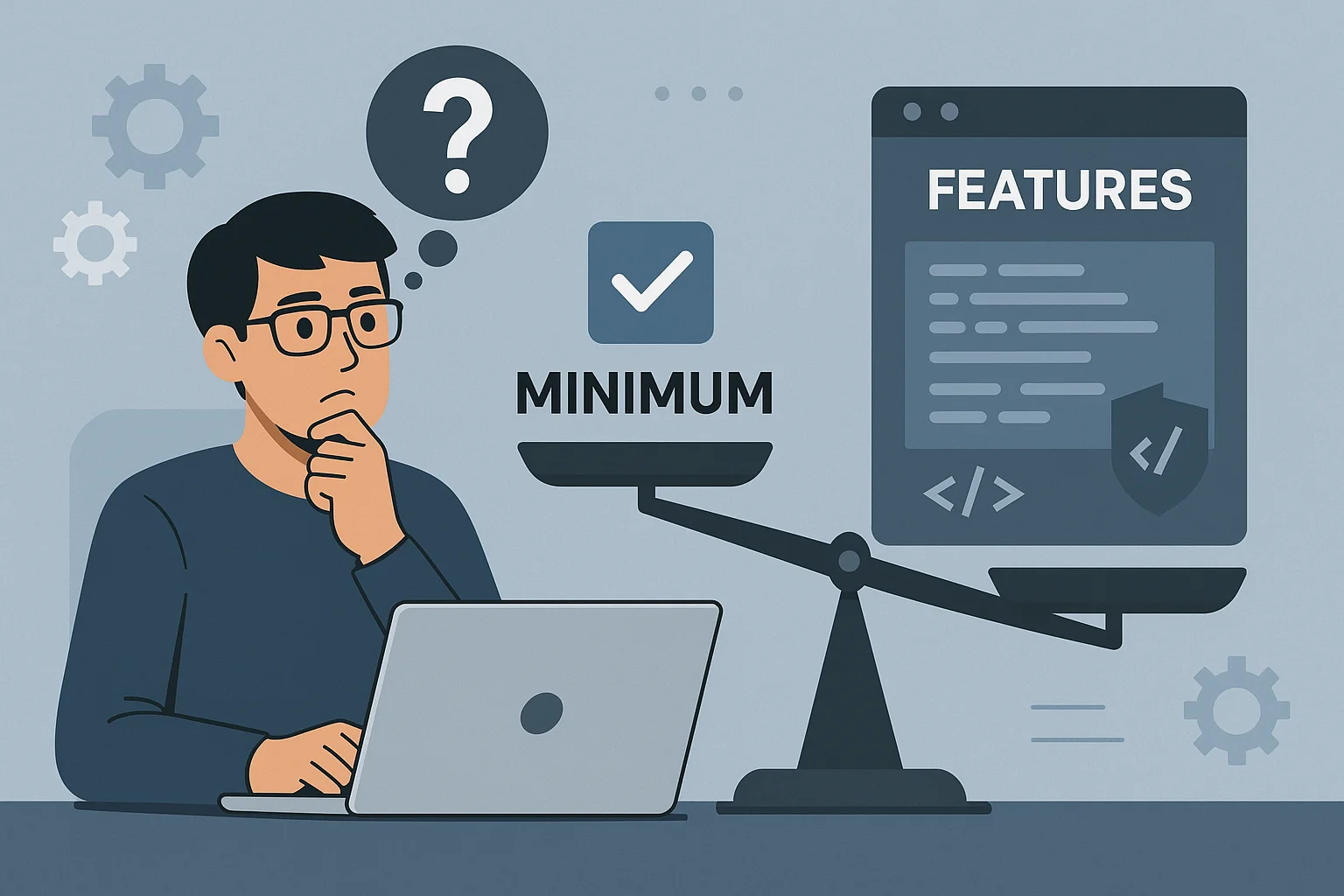
Managing Technical Debt
Moving fast is the point, but poor foundations create problems that haunt you for years. That hacky integration you did to save two weeks? It might take six weeks to undo properly when you scale.
The challenge compounds because:
- You won’t know which MVPs succeed until after launch, so you can’t predict which technical debt will matter
- Pressure to launch fast conflicts with engineering best practices
- Early users form opinions based on quality—buggy MVP might invalidate your hypothesis because execution was poor, not concept
Twitter’s MVP was so hastily built that system overload became part of their brand identity. They made the right call launching fast but paid heavily for technical debt later.
Making the Pivot
Data from your MVP will be messy, contradictory, and open to interpretation. You’ll face three uncomfortable paths: pivot (change core assumptions), persevere (continue refining current direction), or kill it (acknowledge hypothesis was wrong).
How to make better decisions:
- Set decision criteria before you launch—define what metrics indicate success, partial success, or failure
- Distinguish between execution problems and concept problems: low adoption might mean your idea is wrong, or your onboarding is confusing
- Talk to users who tried and stopped—their feedback reveals whether you need to pivot concept or improve execution
- Use cohort analysis to spot trends: if each successive cohort shows improvement, persevere; if they plateau or decline, something fundamental might be wrong
Building minimum viable products inherently means operating with uncertainty. These challenges don’t disappear with experience—you just get better at navigating them systematically.
Prototype vs POC vs MVP: Key Differences
In software development, terms like Prototype, Proof of Concept (POC), and Minimum Viable Product (MVP) are often used interchangeably, but they serve very different purposes.
|
Aspect |
Prototype | Proof of Concept (POC) |
Minimum Viable Product (MVP) |
| Purpose | Test design, UI/UX, and interaction flow | Validate technical feasibility of an idea or technology | Test market assumptions and deliver core value to real users |
| Functionality | Not fully functional; mainly interactive mock-ups | Limited functionality focused on feasibility | Functional product with essential features for early adopters |
| Output | Visual or clickable model | Technical demonstration or experiment | Deployable software product users can interact with |
| Goal | Refine user experience and interface | Confirm technical possibility | Collect user feedback and validate the business concept |
| Use Case | Early-stage design feedback | Feasibility check before development | Early market launch to guide further development |
The key distinction between POCs and prototypes is internal validation tools that cost relatively little and involve no real users. MVPs are market validation tools that cost more but generate actual business intelligence. Think of it as a progression—POC proves you can build it, prototype proves you should build it this way, and MVP proves people will actually use it.
How to Build an Effective MVP
Building an MVP isn’t about cutting corners—it’s about creating a disciplined, evidence-based approach to product development.
Structured Process for Building an MVP
Behind every successful MVP lies a structured process that turns abstract ideas into a validated, market-ready product.
- Identify the Core Problem: Every strong MVP begins with clarity. Use market research, customer interviews, and competitor analysis to pinpoint the exact pain point your audience faces. Without this foundation, even the best execution risks irrelevance.
- Define Must-Have Features: Apply prioritization frameworks like MoSCoW to separate essentials from “nice-to-haves.” A lean scope forces discipline, ensuring resources are invested only where they directly validate the problem-solution fit.
- Prototype the Experience: Wireframes or clickable prototypes help visualize the user journey and align stakeholders early. This not only reduces rework but also exposes usability gaps before costly development begins.
- Test & Validate: Release the MVP to a controlled group of early adopters. Collect both quantitative metrics (engagement, retention) and qualitative insights (user feedback). This dual lens guides the decision to iterate, pivot, or scale.
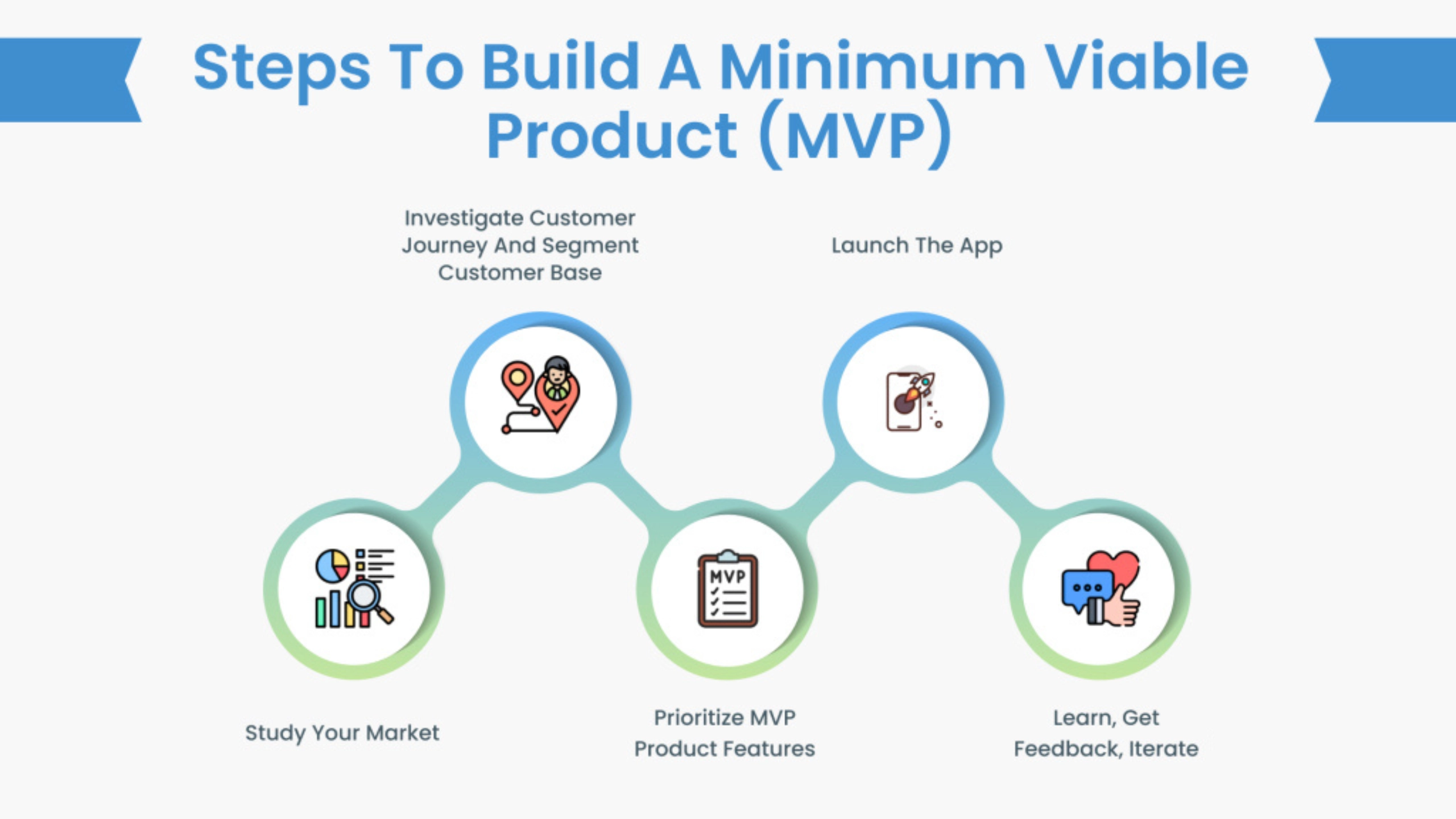
Key Metrics & KPIs
Launching the MVP is only step one. Its true value lies in data-backed validation. The right KPIs balance customer signals with technical performance:
- Engagement Metrics
- DAU/MAU: Gauge product stickiness and frequency of use.
- Retention Rate: Proves whether the product addresses a lasting need.
- Churn Rate: Highlights friction points and unmet expectations.
- Feature Adoption: Measure how users interact with the MVP’s critical features. High adoption confirms you’re solving the right problem; low adoption signals a need to revisit scope or usability.
- System Performance
- Load Time: Directly impacts user satisfaction and retention.
- Bug Reports & Crash Rate: Reveal technical readiness and scalability risks.
Measuring these KPIs provides decision-makers with precise evidence of both user adoption and technical stability. This ensures the MVP is validated by real customer behavior and built on a scalable, reliable architecture that supports strategic growth initiatives.
From MVP to Full-Scale Product
Validating an MVP is only the first milestone. The next challenge is scaling it into a reliable, market-ready solution that drives long-term growth.
- Enhance Features with Evidence: Prioritize improvements based on actual user feedback and proven demand, ensuring every feature delivers measurable value.
- Strengthen Infrastructure: Move from lightweight MVP setups to scalable, secure architectures that can handle higher volumes and enterprise requirements.
- Expand Market Reach: Use data from early adopters to refine positioning, target the most promising segments, and scale campaigns effectively.
- Refine Monetization Models: Leverage real usage and payment behavior to optimize pricing strategies and align revenue models with customer expectations.
In short, moving from MVP to full-scale product means turning validated ideas into scalable, profitable solutions—guided by data, engineered for growth, and ready for enterprise adoption.
FAQs
What is MVP in software development?
An MVP (Minimum Viable Product) in software development is a lean version of an application that includes only the essential features needed to deliver value to early users. Its purpose is to validate assumptions, collect real-world feedback, and guide further investment, ensuring that resources are focused on building features the market truly needs.
How long does it take to build a minimum viable product?
Most MVPs can be built within 4 to 16 weeks, depending on scope and complexity. A simple MVP, such as a landing page or single-feature app, may take just a few weeks, while a high-fidelity MVP with working software can take several months. The key is to keep scope minimal and focused on core value.
Is MVP only for startups?
No. While startups often use MVPs to test new ideas, enterprises and established businesses also adopt MVP strategies. Large organizations use MVPs to experiment with innovations, pilot internal tools, or test new markets without disrupting core business operations.
What is the difference between an MVP and a Prototype?
A prototype is a design or simulation that demonstrates how a product might look or function, but it’s not fully usable. An MVP, on the other hand, is a working version of the product that real users can interact with, providing measurable insights into usability and demand.
How do you measure MVP success?
MVP success is measured by engagement metrics (e.g., active users, retention rates), conversion data (e.g., sign-ups, paid upgrades), and qualitative feedback (e.g., user interviews, surveys). For enterprises, additional KPIs may include ROI, adoption within business units, and scalability potential. These metrics ensure that decisions are based on evidence rather than assumptions.
How does MVP integrate with Agile and DevOps workflows?
MVPs align seamlessly with Agile and DevOps by emphasizing short development cycles, frequent releases, and continuous integration. Agile teams deliver the MVP in sprints, while DevOps ensures rapid deployment and real-time feedback collection. This integration accelerates iteration and makes the MVP more adaptive to changing market conditions.
Can MVPs be scaled into enterprise-grade products?
Yes, but careful planning is required. MVPs should be built with scalable architecture in mind, especially for B2B and enterprise contexts. This allows teams to enhance features, strengthen infrastructure, and integrate with existing systems once the MVP proves successful. Without scalability, transitioning from MVP to full product can become costly and complex.
Conclusion
Bringing a new product idea to life is always a challenge—but you don’t have to commit all your resources before knowing it works. An MVP allows you to test the essentials, learn from real users, and adapt quickly before scaling.
With Newwave Solutions, you get a partner who helps you shape, build, and refine MVPs that match your vision and market needs. If you’re looking to move faster and reduce risks, now is the right time to start building your MVP.
To Quang Duy is the CEO of Newwave Solutions, a leading Vietnamese software company. He is recognized as a standout technology consultant. Connect with him on LinkedIn and Twitter.

Read More Guides
Get stories in your inbox twice a month.
Let’s Connect
Let us know what you need, and out professionals will collaborate with you to find a solution that enables growth.
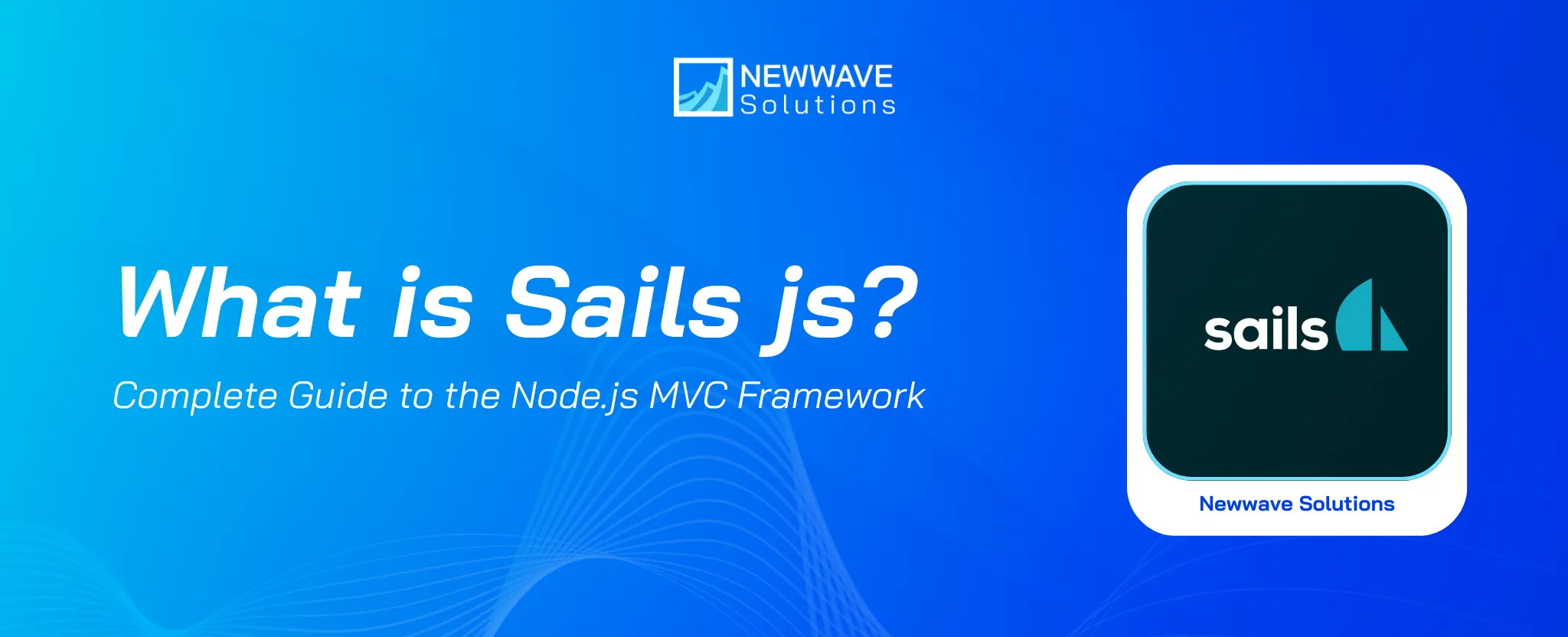
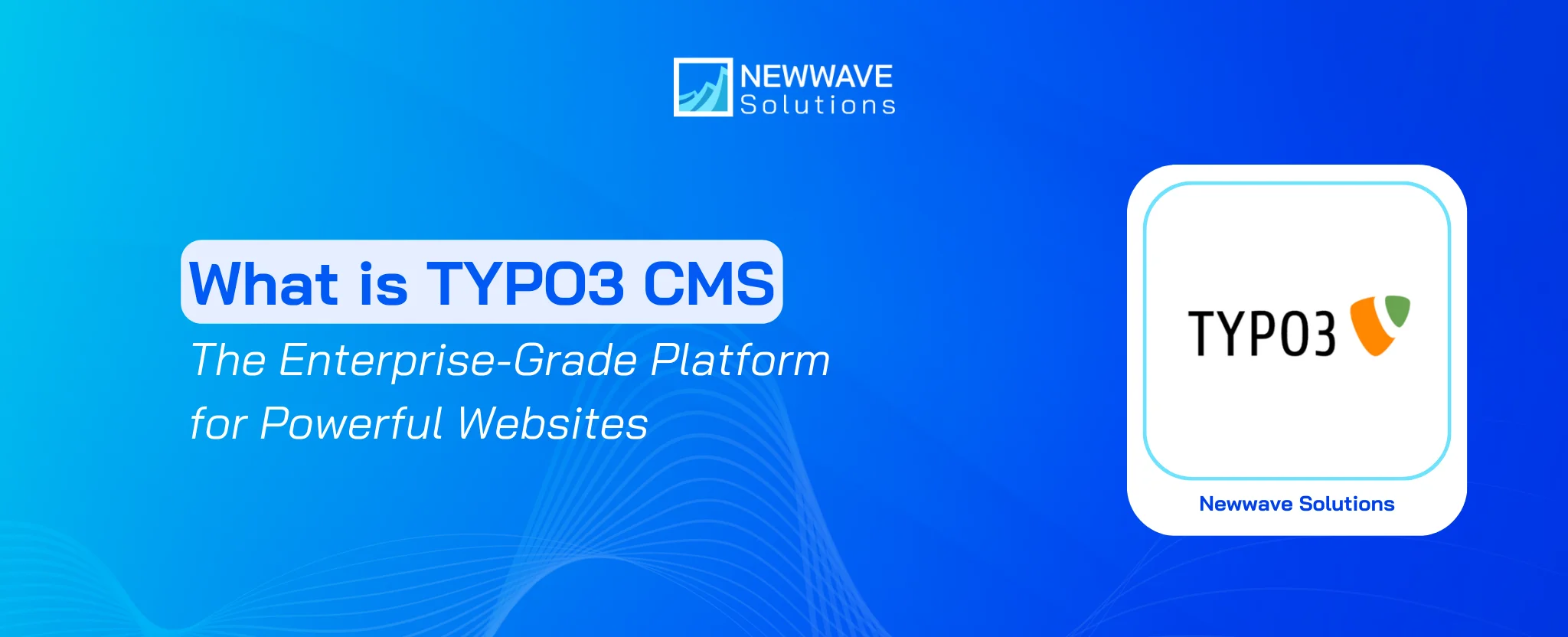
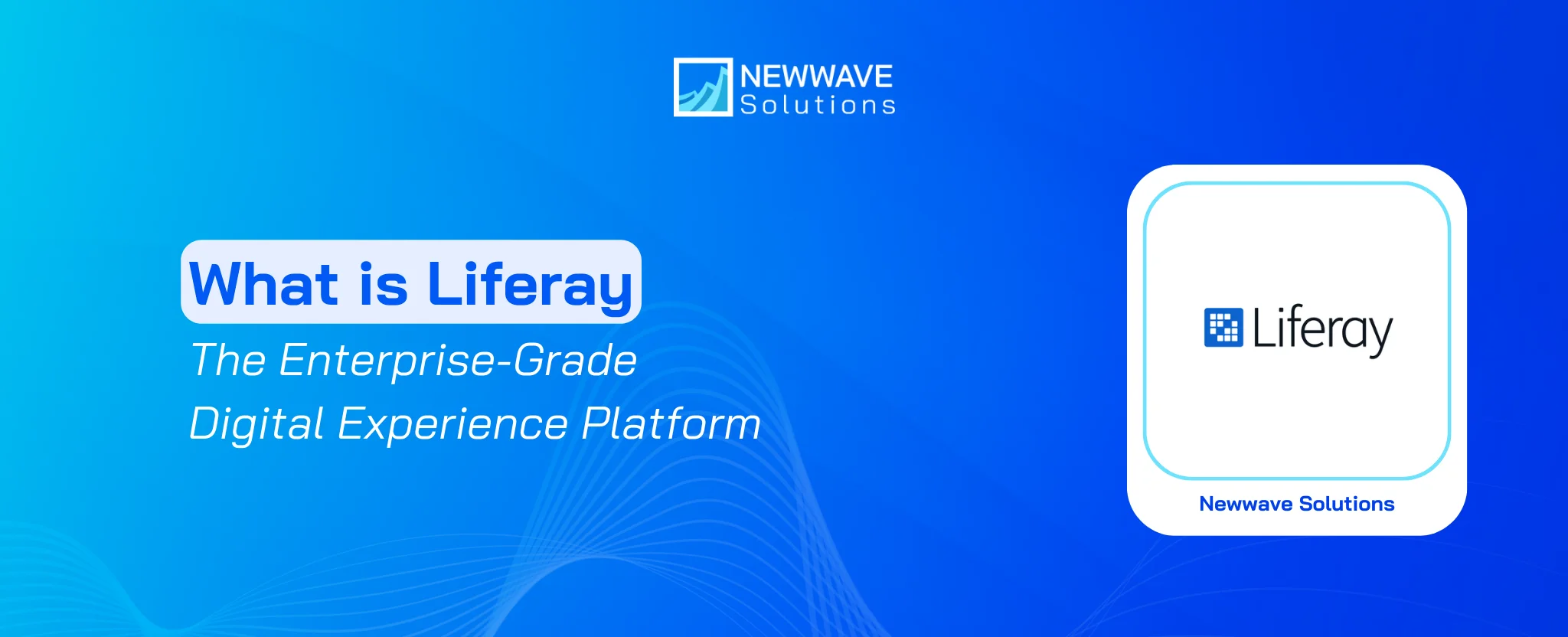
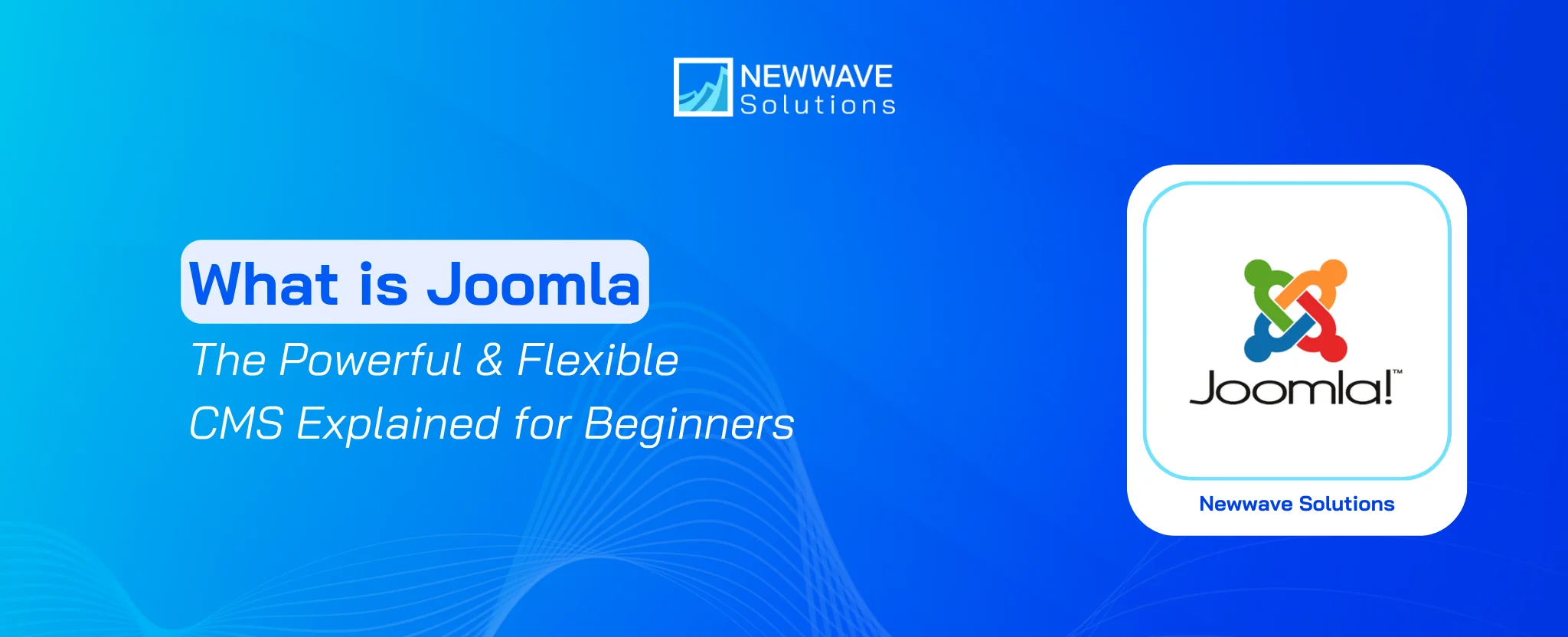
Leave a Reply